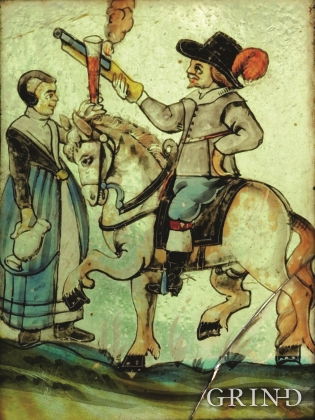Published: 23.06.2015 | Author: Nils Georg Brekke
“Målabuo” at Gjerde in the Mauranger Fjord was decorated with magnificent renaissance ornamentation, which today is all but gone. The year 1588 is carved on one of the cross-posts above the door entrance to the storehouse. The smoke house on the farm is from 1786, and a two-storey loft is also probably from the 1700s.
A close study gives us some idea of the lines in the colourful interior of the house. In the gable there has been a large rosette surrounded by vines and roses. Around the walls from the rafters to the benches, there has been a row with kassettornamentikk (box-like decoration), with changes in colour from reddish brown and black and (perhaps) ochre and white. A four-bladed rosette decorates every square.
Tradition tells us that the storehouse was originally erected as a “bride’s house” for a gracious wedding. In 1588 Børge Gjerde was the proprietor of the farm. He was a representative to the jury and one of the prominent farmers at Mauranger.
On one of the stained glass windows in the storehouse we find a motif that also belongs in the 15th century: a woman who offers a ewer of welcome drink to a knight. It was a widespread custom in Europe to give a stained glass painting with a figurative motif and owner/owner’s name as a “house gift” for a new house. Both at Ænes, Torsnes and Mel were rich families who could have been friends of the farmer at Gjerde.




